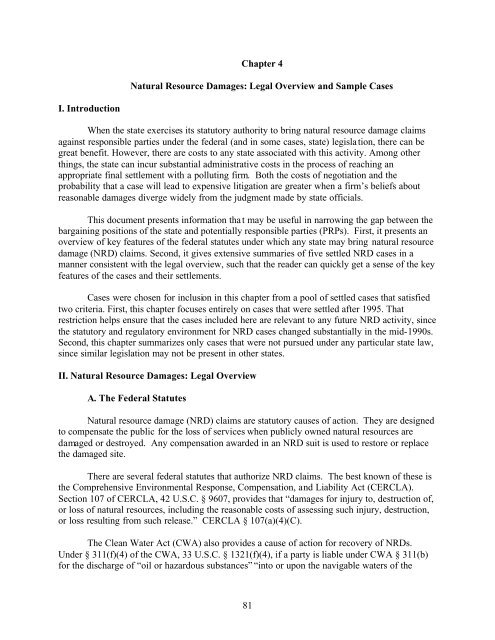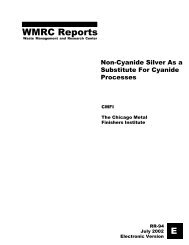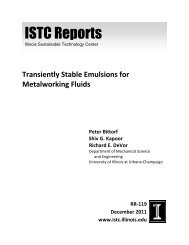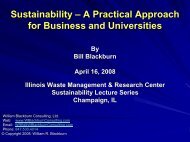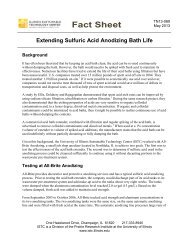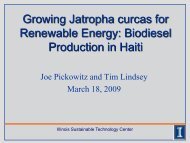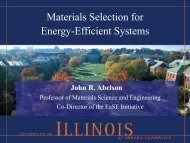Natural Resource Damage Assessment: Methods and Cases
Natural Resource Damage Assessment: Methods and Cases
Natural Resource Damage Assessment: Methods and Cases
Create successful ePaper yourself
Turn your PDF publications into a flip-book with our unique Google optimized e-Paper software.
I. Introduction<br />
Chapter 4<br />
<strong>Natural</strong> <strong>Resource</strong> <strong>Damage</strong>s: Legal Overview <strong>and</strong> Sample <strong>Cases</strong><br />
When the state exercises its statutory authority to bring natural resource damage claims<br />
against responsible parties under the federal (<strong>and</strong> in some cases, state) legislation, there can be<br />
great benefit. However, there are costs to any state associated with this activity. Among other<br />
things, the state can incur substantial administrative costs in the process of reaching an<br />
appropriate final settlement with a polluting firm. Both the costs of negotiation <strong>and</strong> the<br />
probability that a case will lead to expensive litigation are greater when a firm’s beliefs about<br />
reasonable damages diverge widely from the judgment made by state officials.<br />
This document presents information that may be useful in narrowing the gap between the<br />
bargaining positions of the state <strong>and</strong> potentially responsible parties (PRPs). First, it presents an<br />
overview of key features of the federal statutes under which any state may bring natural resource<br />
damage (NRD) claims. Second, it gives extensive summaries of five settled NRD cases in a<br />
manner consistent with the legal overview, such that the reader can quickly get a sense of the key<br />
features of the cases <strong>and</strong> their settlements.<br />
<strong>Cases</strong> were chosen for inclusion in this chapter from a pool of settled cases that satisfied<br />
two criteria. First, this chapter focuses entirely on cases that were settled after 1995. That<br />
restriction helps ensure that the cases included here are relevant to any future NRD activity, since<br />
the statutory <strong>and</strong> regulatory environment for NRD cases changed substantially in the mid-1990s.<br />
Second, this chapter summarizes only cases that were not pursued under any particular state law,<br />
since similar legislation may not be present in other states.<br />
II. <strong>Natural</strong> <strong>Resource</strong> <strong>Damage</strong>s: Legal Overview<br />
A. The Federal Statutes<br />
<strong>Natural</strong> resource damage (NRD) claims are statutory causes of action. They are designed<br />
to compensate the public for the loss of services when publicly owned natural resources are<br />
damaged or destroyed. Any compensation awarded in an NRD suit is used to restore or replace<br />
the damaged site.<br />
There are several federal statutes that authorize NRD claims. The best known of these is<br />
the Comprehensive Environmental Response, Compensation, <strong>and</strong> Liability Act (CERCLA).<br />
Section 107 of CERCLA, 42 U.S.C. § 9607, provides that “damages for injury to, destruction of,<br />
or loss of natural resources, including the reasonable costs of assessing such injury, destruction,<br />
or loss resulting from such release.” CERCLA § 107(a)(4)(C).<br />
The Clean Water Act (CWA) also provides a cause of action for recovery of NRDs.<br />
Under § 311(f)(4) of the CWA, 33 U.S.C. § 1321(f)(4), if a party is liable under CWA § 311(b)<br />
for the discharge of “oil or hazardous substances” “into or upon the navigable waters of the<br />
81


